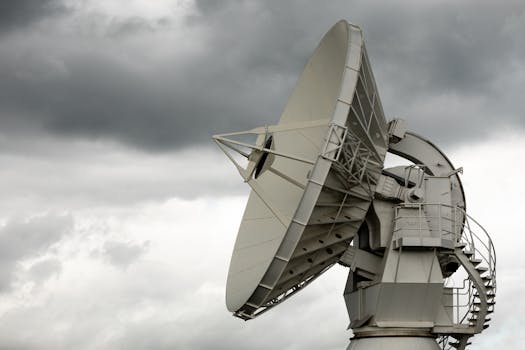GEO Satellites: Unlocking the Power of Geostationary Orbit

GEO Satellites: Unlocking the Power of Geostationary Orbit
GEO satellites, or Geostationary satellites, are a type of satellite that orbits the Earth at an altitude of approximately 36,000 kilometers, remaining stationary relative to a fixed point on the planet. This unique characteristic allows GEO satellites to provide continuous coverage of a specific region, making them an essential component of modern satellite technology. The focus keyword GEO satellites is used to describe these satellites, which play a vital role in various industries, including telecommunications, weather forecasting, and navigation.
Applications of GEO Satellites
GEO satellites have a wide range of applications, including telecommunications, where they are used to transmit data, voice, and video signals across the globe. They are also used for weather forecasting, providing high-resolution images of cloud patterns, storm systems, and other meteorological phenomena. Additionally, GEO satellites are used for navigation, providing location information and timing signals for GPS and other satellite navigation systems.
Another significant application of GEO satellites is in the field of Earth observation, where they are used to monitor climate change, track natural disasters, and manage natural resources. They are also used for military communications, providing secure and reliable communication services for military personnel and operations.
Benefits of GEO Satellites
The benefits of GEO satellites are numerous, including their ability to provide continuous coverage of a specific region, making them ideal for applications that require real-time data. They are also relatively low-cost compared to other types of satellites, and their signals can be received using small, inexpensive antennas.
GEO satellites also offer high bandwidth, making them suitable for applications that require large amounts of data to be transmitted. They are also relatively easy to maintain, as they can be controlled and updated remotely, reducing the need for costly and complex maintenance operations.
Challenges and Future Developments
Despite the many benefits of GEO satellites, there are also challenges associated with their use. One of the main challenges is the risk of interference from other satellites and terrestrial systems, which can disrupt the signal and affect the quality of service. Another challenge is the limited availability of orbital slots, which can limit the number of GEO satellites that can be launched and operated.
However, researchers and developers are working to overcome these challenges, with new technologies and innovations being developed to improve the performance and efficiency of GEO satellites. For example, the development of high-throughput satellites (HTS) is enabling the provision of faster and more reliable broadband services, while advances in propulsion systems are allowing GEO satellites to be launched and operated more efficiently.





